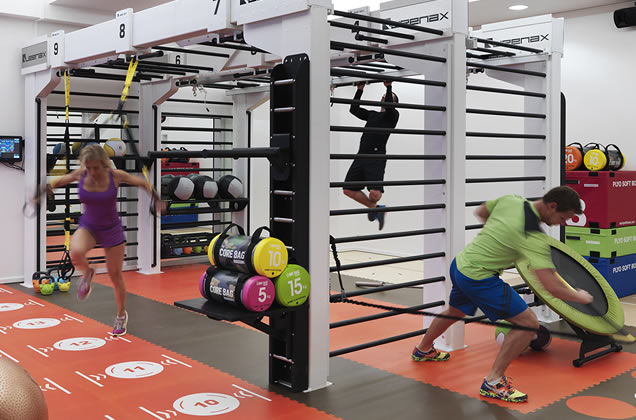Most of us are quite happy to commit to exercising three times a week, but which forms of exercise are best, given our limited schedule? And what else should we be doing to give ourselves the best chance of losing those extra kilos, building that extra bit of muscle or simply improving our overall health?
There are seven steps that will give you a great start, and they three fall into one of the 3 main categories – Exercise, Nutrition and Recovery.
Step 1
Nutrition: Eat a balanced diet, with around 40% of your calories in the form of carbohydrates, 30% protein and 30% fat. Most of us are taking as much as 75% of our calories from starchy carbs (including bread, pasta, rice and potatoes) and consuming very few calories in the form of protein (as little as 10%). This causes blood sugar levels to rise, producing insulin which converts the excess sugars into fat. If this is repeated – four to five times per day – then our bodies become fat storing machines, gaining weight over time and potentially triggering long-term health consequences such as diabetes and heart disease.
Step 2
Nutrition: Eat little and often – the more often you eat, the more calories your body burns, especially if each a meal contains sufficient protein and is based on the 40:30:30 principle above.
We see incredible results in fat loss and energy levels when people move from three meals a day to three meals plus two snacks. The total amount of calories can be the same, but spreading them out speeds up the metabolism, which helps increase results, when planned alongside regular training.
Step 3
Nutrition: Eat after training – there is a small window of around 45 minutes after a workout in which you’ll benefit most from the foods that are essential for the repair of tissues and muscles. Basically, the sooner you consume quality protein and carbohydrate after exercise, the quicker your muscles can repair, grow and strengthen.
Step 4
Nutrition: Drink – water that is! Most of us simply don’t consume enough regular fluids, which means we are often dehydrated. This weakens performance, not only during a workout but throughout the day.
Between 2 and 3 litres of water a day (depending on your size and the amount of exercise you do) is an established yardstick, with extra water whenever you increase the duration or intensity of your exercise.
Step 5
Exercise: Lift weights. This doesn’t mean that you have to start bench-pressing in the free-weights area, but some form of resistance training using either free weights, fixed machines, cables, body resistance or the functional pieces of gym equipment – ViPR™, Kettlebells and TRX – is a great way of working muscles.
Step 6
Exercise: Stop the long bouts of cardio – most people will take to the treadmill, cross trainer or bike for hours hoping to burn calories and lose fat. With 3,500 calories per 500gr of fat, most of you will burn at most 500 calories per cardio workout. To lose 500gr of fat, you’d have to endure seven sessions every week.
A more efficient way of shedding the fat is to do shorter, more intensive interval training; for example moving between a jog and a sprint for 20 minutes. This is because you’ll be using both anaerobic and aerobic systems, which raises the metabolism for up to eight hours – resulting in a far higher calorie burn.
The fitness benefits of this type of interval training are enormous, so try adding time on the rower, cross trainer, bike or treadmill for better results.
Step 7
Recovery: Sleep for eight hours. There are two key benefits to maintaining your full sleep quota. Firstly, you’ll be fully rested so you can push yourself harder in the gym, the pool or on the tennis court – meaning higher calorie burn and improved performance. Secondly, reduced sleep often results in an excess of the hormone cortisol, or the ‘stress hormone’ as it’s commonly called. Too much cortisol can make losing fat or gaining muscle difficult.
Avoid watching TV within an hour of bedtime, and avoid sleeping with a mobile phone or LEDs on in your room; darkness will further improve the quality of your sleep.
Good luck implementing the seven steps above!
Rob Beal is Group Well-being Director at Aspria
Photos: Aspria







